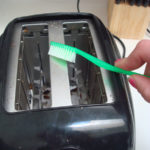Some of the Biggest (And Grossest) Cleaning Mistakes You’re Making
1 Using Bleach To Kill Mold
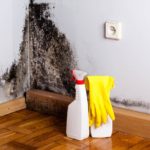
Mold can be a problem for homeowners and bleach may seem like an answer to the problem, but it’s not the best option. While chlorine bleach can get rid of mold on non-porous surfaces, it doesn’t do the job on porous materials, like drywall. So, while mold may wipe off after being sprayed with bleach, you’re really just changing the color.
Not only will the mold regain its color in a few weeks, but it will grow back even worse than it was before. You’d be better off replacing the drywall or spraying the surface with vinegar, which can eliminate many common household molds.
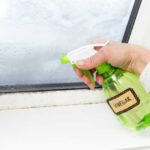
2 Using Too Much Laundry Detergent
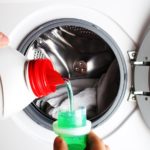
One mistake you may not be aware of is using too much laundry detergent in your washing machine. Overfilling the cup can ruin your garments by trapping residue and even cause mechanical problems for your washing machine. So, how much should you use?
The folks over at Taste of Home gave an insider secret. Per the usual 8-pound load of laundry, the amount of detergent needed to clean clothes is only one tablespoon. Double that for loads weighing in at 12 pounds or more. Reduce it for the days when you’re hand washing,” Hannah Twietmeyer wrote.
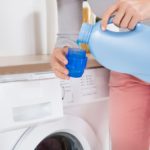
3 Spraying Deodorizers After Cleaning Your Floors
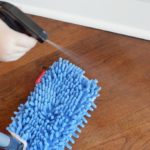
Many homeowners use a deodorizing spray to make their homes smell fresh. It may be tempting to spray a home fragrance on your floors after you’ve mopped, but experts say you’ll only create more of a mess to clean up.
According to Best Life, Michael Silva-Nash, executive vice president of Molly Maid, a Neighborly company, offers a great cleaning tip. “Spray your favorite fragrance before you do the floors, otherwise you’ll end up with sticky floors with small little blotches,” Silva-Nash said. So while your instincts may be right, it makes a difference which order you choose to spray it on the floor.
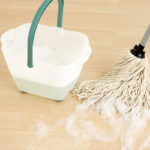
4 Washing Wooden Cutting Boards Wrong
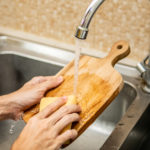
Wooden cutting boards are amazing tools to have in the kitchen, but it’s important to make sure they’re cleaned properly. The porous surface can be a breeding ground for nasty germs. We have a cleaning hack that ensures your cutting board will be squeaky clean.
Skip the dishwasher, because that won’t get rid of harmful germs and could harm the wood. A simple way to disinfect a wooden cutting board is to sprinkle it with coarse salt and rub it around with half a lemon. The juice helps scrub away the salt and soak up any harmful bacteria.
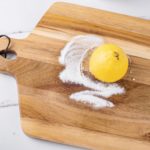
5 Cleaning Reflective Surfaces With Magic Eraser
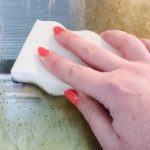
Magic Erasers have proven to be a handy tool for removing tough stains from walls and other household surfaces. While it may seem like a miracle worker, there are some areas where you should never use a Magic Eraser.
The folks over at Best Life spoke with Laura Smith, owner of the Colorado-based All Star Cleaning Services. She revealed an insider cleaning tip. “Using a Magic Eraser on any sort of shiny surface will cause dull spots,” Smith said, adding, “Microwave exteriors, wood floors, countertops, and any area of the home painted with semi-gloss paint shouldn’t be cleaned with one of these sponges.”
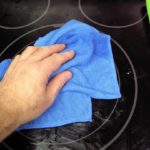
6 Overlooking “Hight Touch” Points

You may keep a tidy home, but there are some “high touch” objects that are often overlooked when it comes to disinfecting. The CDC offers home cleaning tips to ensure that your space is as germ free as possible.
According to the CDC Website, “High-touch surfaces are surfaces that are handled frequently throughout the day by numerous people.” A few places that shouldn’t be neglected are doorknobs, sink and faucet knobs, light switches, phones, counters, and remote controls, to name a few. Run an antibacterial wipe over these areas daily for a healthy and clean home environment.
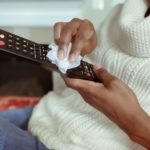
7 Using The Same Rag Around The House
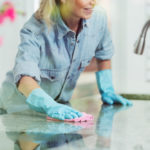
It’s a mistake to think that you can use the same rag on multiple surfaces by spraying it with a cleaning solution. The harsh reality is that germs often stick around, so you could actually spread germs around the house without knowing it.
You’d be better off having a designated microfiber cleaning cloth for each area of your home. We love microfiber rags because they’re easy to clean in the laundry and reuse. Of course, using a new sheet from a paper towel roll is great for cleaning each area up as well. Just be sure to change out whichever tool you use.
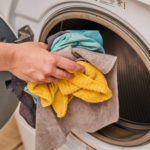
8 Not Cleaning The Vacuum

Even though you may your carpets and rugs often, it’s crucial that you tend to your vacuum frequently to keep it working in tip-top shape. Failing to do so can make it harder for your vacuum to pick up dirt or even spread dust into the air, making your home unintentionally dirtier.
Changing vacuum bags, dumping out debris, or cleaning the filter as soon as they become full will add to the life of your vacuum and ensure you’re getting the most out of your cleaning appliance. Don’t forget to wipe down any attachments with a moist towel.
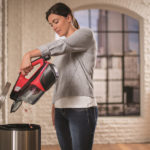
9 Using A Feather Duster
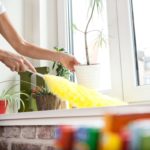
A feather duster may seem like a tried-and-true cleaning tool because they’ve been around for ages, but they do less actual cleaning than we all think they do. They tend to spread dust around the surface rather than clean it.
You may wonder the best way to clean areas in your home that often collect dust, like ceiling fans and bookshelves, if you ditch the feather duster? Caroline Stanko of Taste of Home offers a better alternative. “Use a microfiber cleaning cloth or a disposable paper towel with an appropriate cleaning solution, depending on the surface being dusted,” Stanko wrote.
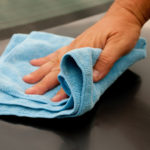
10 Scrubbing Carpet Stains
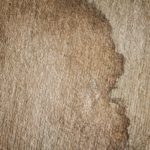
There’s nothing worse than trying to get a stain out of your carpet. While your instincts may tell you to use a bit of elbow grease to rub out the stain, you could accidentally make more trouble for yourself. The folks over at Best Life turned to Leanne Stapf, COO of The Cleaning Authority for cleaning advice.
She revealed that if you’re rubbing a stain, you could “cause it to spread or soak deeper into the carpet fibers or fabric,” thus making it more difficult to clean. Instead, Staph advises “blotting the stain, which removes the excess liquid rather than pushing it down into the carpet.”
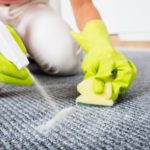
11 Wearing Shoes In The House
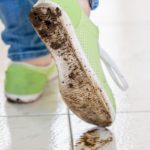
Do you allow people to wear shoes in your home? If so, you might want to rethink that choice because bacteria found on the bottom of shoes can track a good deal of unhealthy stuff onto your floors. TODAY Home reported that Dr. Charles Gerba, professor of microbiology and environmental sciences at the University of Arizona, studied exactly what kinds of bacteria live on shoe soles.
“If you wear shoes for more than a month, 93 percent will have fecal bacteria on the bottom of them,” he revealed, adding that pet waste and toilet splashes from public bathrooms cause potential contamination. Ew! Kick off those shoes at the door.
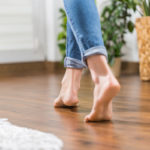
12 Neglecting The Sink
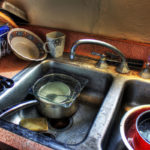
Neglecting to clean your sink can cause more of a mess than you think. All sorts of bacteria, from salmonella to E. coli can lurk on the surface. That’s why it’s so important that you scrub and disinfect it on a regular basis.
Thrillist spoke with Melissa Maker, founder of Clean My Space, who had a great tip for dealing with a stinky drain. “Pour a cup of baking soda down the drain, let it sit for about half an hour, and then follow it up with white distilled vinegar. The mixture will bubble up, neutralize odors, and clean that sink drain,” Maker advised.
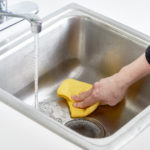
13 Not Cleaning Your Sponge
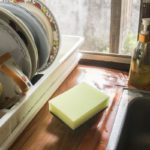
A nasty sponge is another cleaning tool that does more harm than good. That’s because it can be a vessel for germs and bacteria to spread throughout the kitchen. We checked in with Good Housekeeping to find the best way to clean a sponge.
“The microwave was one of the next most effective, zapping 99.9% of germs. Do this by putting the sponge in the microwave, saturating it in water (we used 1/4 cup for scrub sponges and 1/2 cup for cellulose), then heating it on high for one minute (scrub) or two minutes,” Lauren Smith McDonough wrote.
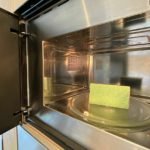
14 Flushing With The Toilet Seat Up
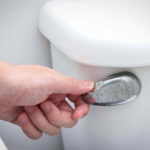
One room in the house that has the most potential to be gross is the bathroom. Every time we flush, “toilet plume aerosols are released into the air. Which is just a fancy way of saying that all the nasty stuff in the toilet fills the air and scatters around the room. Here’s a pro tip that will keep your restroom sanitary.
Always flush with the toilet lid down. It acts as a barrier to all the bacteria that you don’t want on your toothbrush and other bathroom accessories. This one simple step will keep your family healthy.
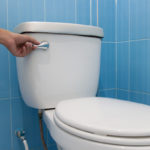
15 Overlooking The Shower Curtain Liner
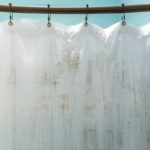
Don’t overlook the shower curtain liner to keep mold and mildew from forming. Martha Stewart turned to Lauren Bowen, director of franchise operations at Two Maids and a Mop for advice.
“The ideal frequency for your liner [to be cleaned] is once a month to stay ahead of any mold growth, as it is the closest to all the moisture,” Bowen said. “If your curtain is made of plastic, you can still use your washer, but switch up the settings to cool water, and add a bath towel or two in the load to prevent the curtains from wrinkling too much.”
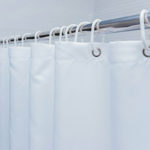
16 Washing Nonstick Pans In The Dishwasher
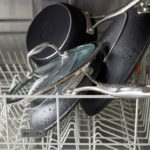
Nonstick pans are convenient for cooking because they make cleaning up easy. No more scrubbing residue off the surface of the pan. Although it may seem like a time-saver, resist the urge to place your nonstick pots and pans in the dishwasher.
They coat most nonstick cookware in a chemical called Teflon, a special non-toxic chemical that keeps food from sticking to the pan. Unfortunately, the dishwasher can be too abrasive, causing the Teflon to peel off and keeping your pots and pans from looking their best. You’d be wise to handwash all nonstick pans to make them last longer.
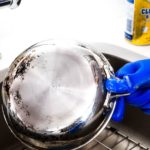
17 Neglecting The Dishwasher Filter
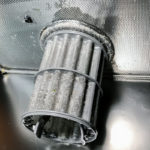
If your dishwasher doesn’t clean your dishes well, then there might be one crucial step you missed along the way. Forgetting to clean out your dishwasher’s filter can make your dishes look dingy after they’ve been through a cycle.
The professionals over at Maytag suggest, “Depending on how frequently you’re using your dishwasher, you should clean your filter anywhere from once a year to once a week, but usually every three to six months. Removing, cleaning, and reinstalling your dishwasher filter is easy and takes only a few minutes,” they wrote on their website.
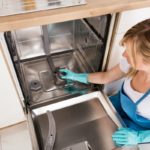
18 Ignoring The Coffee Maker

Your coffee maker or coffee pot is a perfect place for mold and mildew to grow, thanks to the warm and moist environment. That’s why it’s so important to clean them after each use. According to Jillee, over at One Good Thing, adding an everyday product to your coffee pot can help.
“Fill the water tank with warm water and add two denture tablets. Wait for the fizzing to stop, then run the coffee maker through a full brew cycle. Rinse out the tank, then run one or two more brew cycles to remove any remaining residue inside the machine,” she wrote.

19 Cleaning Water Bottles Wrong
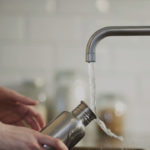
Earth-conscious people prefer to drink out of reusable glass water bottles instead of plastic. Many people neglect to wash their water bottles often enough, and when they do, they wash it the wrong way, which can leave behind nasty bacteria.
You should wash your water bottle at least once a day when used daily. Fill the water bottle with warm water and dish soap. The best tool for cleaning is to scrub the inside with a bottle brush, making sure to clean the lid and tip. Germs like a wet environment, so you’d be smart to wipe the inside and make sure it’s nice and dry.
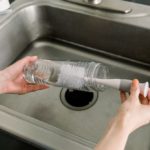
20 Cleaning Windows With Newspaper
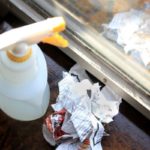
Cleaning glass with newspaper is an old wives’ tale that is no longer the best option. Newspapers used to be printed with petroleum jelly ink, which is what made them so great for getting shiny windows. These days, newspapers are printed with soy ink, which doesn’t have the same effect.
If you attempt to wipe your windows with a current newspaper, it may leave behind streaks and even leave behind a trail of ink. It would be smarter to use a microfiber cloth or a squeegee. Throw the newspaper into the recycling bin and your windows will be happier.
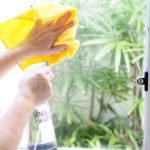
21 Not Cleaning Your Toaster Thoroughly
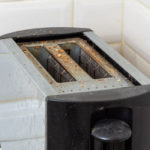
Thoroughly cleaning your toaster is imperative. After all, you toast your bread in it every morning! Do you really want to ingest potential bread crumbs from 3 months ago that would have stuck to the inside and ended up on your morning toast? We don’t think so.
You should clean your toaster from top to bottom once a week. First, unplug it, then empty and wash the crumb tray underneath the toaster. Then, take a dry toothbrush and gently loosen the debris stuck inside, on the coils. Then, turn your toaster upside down and shake it gently so that the debris falls out. Now all you have to do is clean the outside of your toaster, and you’re done!
